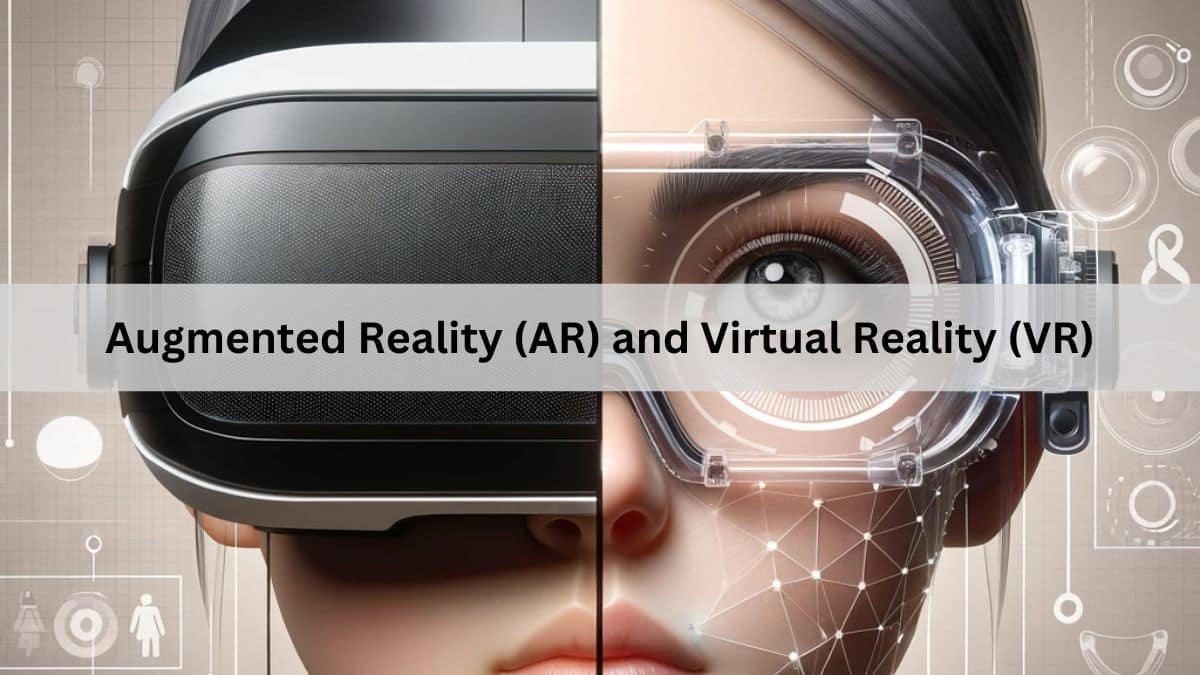Over the past decade, dental technology has revolutionized dental care delivery with advanced diagnostics and innovative treatment methods.
These advancements improve patient outcomes and practice efficiency. This blog post explores recent dental tech trends, their impact on care, and future prospects for dental professionals and patients.
The Rapid Rise of Dental Technology
The rapid pace of technological advancement has significantly impacted nearly every industry, and dental care is no exception. Over the last ten years, technological innovations have completely transformed traditional dental practices, allowing dentists to provide better care in less time. Today, dental professionals can harness the power of cutting-edge equipment and techniques that enhance diagnostics, treatment plans, and patient experiences.
One of the most notable shifts in the industry is the increased integration of digital tools into daily practice. Technologies such as digital imaging, electronic health records, and practice management software have streamlined workflows, allowing dental teams to focus more on patient care rather than paperwork. This transformation isn’t just a passing trend; it’s a fundamental shift that sets the stage for more significant advancements in the future.
Furthermore, the COVID-19 pandemic accelerated the adoption of various dental technologies, as practitioners sought ways to minimize contact while ensuring patients received the necessary care. The result? A lasting impact on the industry and a newfound appreciation for technology’s role in enhancing dental practice efficiency and patient safety.
Impact of Technology on Dental Care
Diagnostics Redefined
Advancements in dental diagnostics have been a game-changer for practitioners. With technologies like cone beam computed tomography (CBCT) and digital radiography, dental professionals can diagnose issues with unprecedented accuracy. These imaging techniques allow for 3D representations of oral structures, enabling dentists to identify problems that traditional X-rays might miss.
For instance, CBCT provides detailed images of the jaw, teeth, and surrounding structures, making it easier to plan complex procedures like implants and extractions. The compact nature of these diagnostic tools also means they require less space in the office, making them ideal for smaller practices.
Additionally, integrating artificial intelligence into diagnostics is paving the way for more accurate and efficient evaluations. AI algorithms can analyze imaging data and highlight areas of concern, assisting dentists in making better-informed decisions while reducing the risk of human error.
Treatment Innovations
The landscape of dental treatment has changed dramatically with the introduction of new technologies. Laser dentistry, for example, offers a less invasive approach to procedures like cavity removal, gum reshaping, and teeth whitening. Lasers can minimize discomfort, reduce recovery times, and improve overall patient satisfaction.
Another significant advancement is the rise of 3D printing in dentistry. This technology enables the rapid production of custom dental appliances, such as crowns, bridges, and aligners. With 3D printing, dental professionals can create precise replicas of a patient’s teeth and mouth structure, ensuring a better fit and faster turnaround times. This includes applications in orthodontics like those available in Santa Rosa, CA
Furthermore, teledentistry has emerged as a revolutionary approach to patient care. By leveraging video conferencing and digital communication tools, dental professionals can conduct remote consultations, follow-up appointments, and even pre-screening assessments. This approach allows for greater accessibility and convenience, especially for patients who might have difficulty visiting the office in person.
Enhancing the Patient Experience
A primary focus of technological advancements in dentistry is enhancing the patient experience. From streamlined appointment scheduling and digital reminders to virtual consultations, technology makes it easier for patients to engage with their dental care providers.
In addition, patient education has taken on a new dimension thanks to technology. Visual aids, such as 3D animations and augmented reality, can help explain treatment options and procedures in a more engaging and understandable manner. This not only empowers patients to make informed decisions but also fosters trust and loyalty between patients and dental professionals.
Building Stronger Relationships
Technology also plays a vital role in building better relationships between dental professionals and their patients. Customer relationship management (CRM) systems allow practices to track patient interactions and preferences, enabling personalized communication and targeted marketing efforts.
For instance, reminder systems can help ensure that patients keep their appointments, while follow-up messages can encourage them to maintain their dental hygiene practices at home. This tailored approach strengthens the bond between patients and their dental team, resulting in improved satisfaction and retention rates.
Exploring the Latest Advancements
3D Printing in Dentistry
3D printing is one of the most significant technological advancements in dentistry today. By allowing for the rapid production of dental appliances, dentists can create custom solutions tailored to each patient’s unique needs. From aligners to prosthetics, the applications of 3D printing are vast and varied.
The efficiency of 3D printing not only saves time for dental practices but also reduces costs, providing affordable solutions for patients. With the potential to create intricate designs and complex geometries, 3D printing is revolutionizing how dental professionals approach treatment planning and execution.
Teledentistry
The rise of teledentistry has changed the way dental care is delivered. With the ability to conduct remote consultations, dental professionals can address patient concerns without requiring them to visit the office. This shift not only increases accessibility and convenience but also opens doors for patients in rural areas or those with mobility challenges.
Teledentistry also allows for quicker follow-ups and post-treatment check-ins, helping dental professionals monitor patient progress without disrupting their busy schedules. This innovation holds great promise for future dental care models, ensuring that patients receive timely attention and support.
AI in Diagnostics
Artificial intelligence is making waves in the dental industry, particularly in diagnostic processes. By analyzing imaging data and identifying abnormalities, AI-driven tools help dental professionals make quick and informed decisions.
These tools can detect early signs of decay, gum disease, and even oral cancer, enabling timely intervention and treatment. By supporting dental professionals in their diagnostic efforts, AI enhances the overall quality of care provided to patients.
Benefits of Adopting New Technologies
Improved Accuracy
One of the most significant advantages of adopting new technologies is improved accuracy in diagnostics and treatment planning. With tools like AI and advanced imaging techniques, dental professionals can identify issues more effectively and propose the best treatment options for their patients.
This heightened accuracy translates to better outcomes, as patients receive tailored care that addresses their specific needs. Improved accuracy also reinforces trust between patients and their dentists, leading to stronger long-term relationships.
Enhanced Efficiency
Incorporating technology into dental practices helps streamline workflows, ultimately leading to enhanced efficiency. Digital records, automated appointment scheduling, and telehealth services reduce administrative burdens and allow dental teams to focus on patient care.
With greater efficiency, practices can accommodate more patients without sacrificing the quality of care. This approach leads to increased revenue opportunities and improved patient satisfaction simultaneously.
Better Patient Outcomes
New technologies not only improve the efficiency of dental practices but also lead to better patient outcomes. When patients receive timely diagnoses and personalized treatment plans based on accurate data, they tend to experience fewer complications and higher satisfaction levels.
Additionally, enhanced communication tools promote greater patient engagement and adherence to treatment plans, further contributing to positive outcomes. By prioritizing patient experience and education, dental professionals can foster a culture of preventive care that benefits everyone involved.
The Future of Dental Technology
Continuous Evolution
The future of dental technology holds immense potential. With ongoing advancements in AI, robotics, and telehealth, dental care is expected to become more personalized, efficient, and accessible. Innovations will continue to shape the practice of dentistry, offering new opportunities to enhance patient experiences and outcomes.
For instance, as AI technology matures, we may see even more sophisticated diagnostic tools capable of predicting potential issues based on genetic and lifestyle factors. This proactive approach could revolutionize preventive care, enabling practitioners to address concerns before they escalate.
Integration of Virtual Reality
Virtual reality (VR) has the potential to transform dental education and training. By immersing students and professionals in simulated environments, VR can help dental practitioners refine their skills and practice complex procedures without risk to real patients.
Furthermore, VR can play a role in patient comfort. By offering distraction techniques during procedures, dental practices can help reduce anxiety and improve the overall patient experience.
Expanding Teledentistry Capabilities
As technology advances, the capabilities of teledentistry will expand as well. Future iterations may include remote monitoring devices that allow practitioners to assess patients’ dental health in real-time, enabling more immediate intervention when necessary.
These advancements will likely lead to a reduction in emergency visits and improve access to care for patients in underserved communities. The continued growth of teledentistry will play a vital role in shaping the future of dental care.
The Importance of Staying Updated
Keeping Pace with Changes
For dental professionals, staying updated with the latest advancements in technology is crucial for maintaining a competitive edge. Adopting new tools and techniques can enhance your practice and ensure you’re providing the best possible care to your patients.
Regularly attending industry conferences, workshops, and online courses can help you stay informed about emerging technologies and best practices. Engaging with your peers in the dental community also fosters collaboration and knowledge sharing, further promoting growth and innovation.
A Commitment to Lifelong Learning
The dental industry is constantly evolving, and ongoing education is vital for success. By investing in professional development and committing to lifelong learning, dental professionals can adapt to changes and better serve their patients.
Participating in training programs related to new technologies equips you with the knowledge and skills necessary to leverage these tools effectively. This commitment to learning demonstrates your dedication to providing high-quality care and positions you as a trusted expert in the field.
Encouraging Patient Education
Staying updated with advancements in dental technology also allows you to educate your patients on their options. Informing them about new tools and techniques fosters trust and encourages them to engage in their dental care actively.
Providing resources, such as informative articles and videos, can help demystify complex concepts and empower patients to make informed decisions about their treatment. This emphasis on patient education ultimately contributes to better oral health outcomes and increased satisfaction.
Conclusion
The advancements in dental technology have transformed the industry, paving the way for improved patient care and enhanced efficiency in dental practices. By staying informed and adopting new tools, dental professionals can better serve their patients while benefiting from increased accuracy and streamlined workflows.


